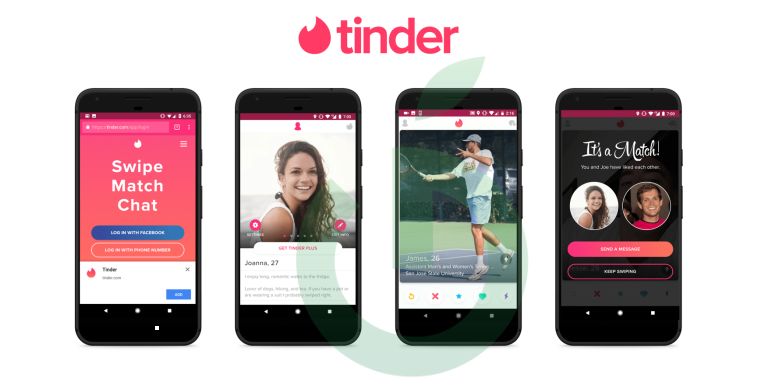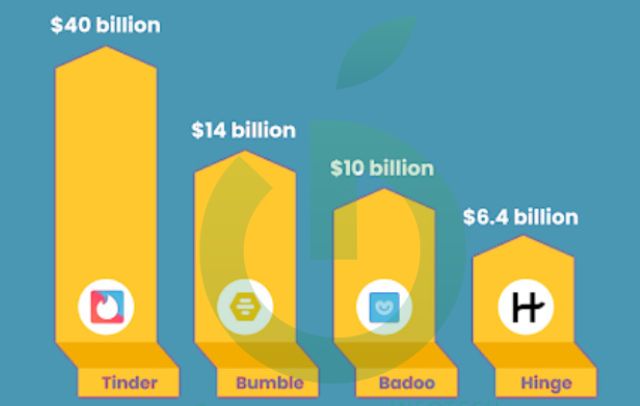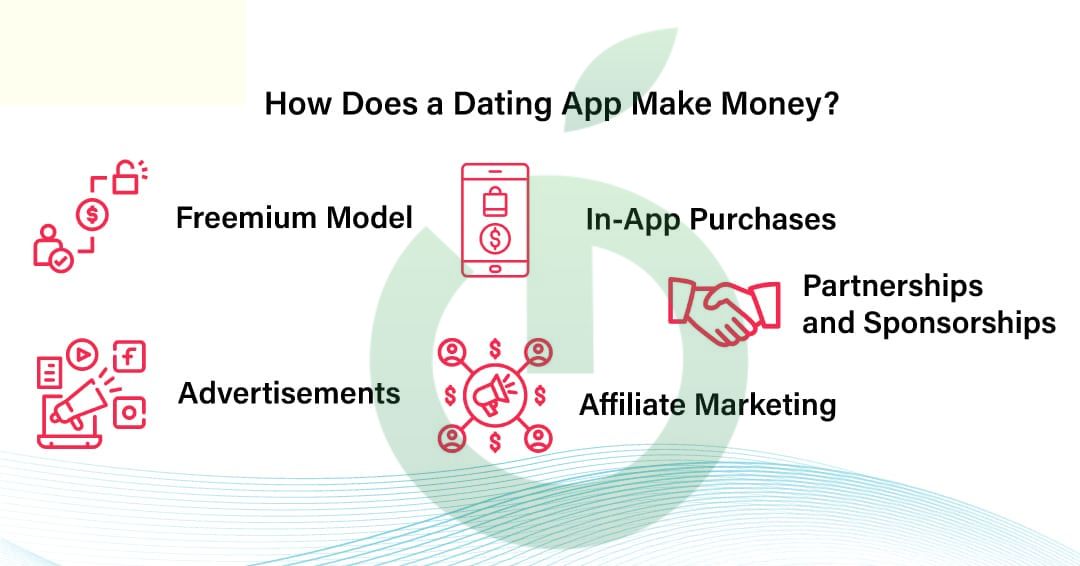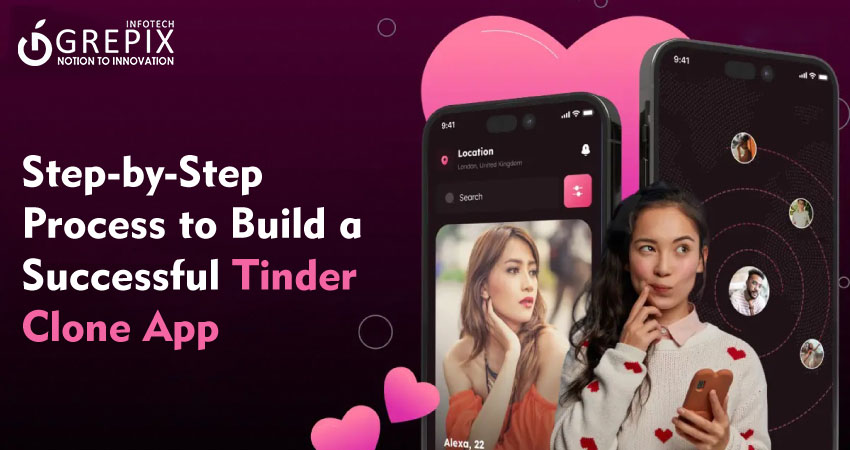Step-by-Step Process to Build a Successful Tinder Clone App
In today's digital age, dating apps have revolutionized the way people connect, making it easier than ever to find meaningful relationships or casual encounters. Among these platforms, Tinder has established itself as a leading force, boasting over 75 million monthly active users and facilitating billions of matches since its launch in 2012. The success of Tinder has inspired many entrepreneurs and developers to create their own dating apps, hoping to replicate its popularity and profitability.
Building a successful Tinder clone app requires more than just mimicking its features; it demands a comprehensive understanding of the dating app market, user preferences, and advanced technological integration. In this blog, we will guide you through the step-by-step process of creating a Tinder clone app, leveraging the latest trends and best practices in app development. From conceptualization and market research to design, development, and deployment, we will cover every critical aspect to ensure your app stands out in a competitive market. Whether you're a seasoned developer or a startup enthusiast, this guide will equip you with the knowledge and tools needed to build a successful dating app that can potentially capture a significant share of the $12 billion online dating industry.
By the end of this article, you'll have a clear roadmap to follow, complete with essential insights and practical tips to turn your vision into a thriving reality. Let's dive in and explore the meticulous process of creating a Tinder clone app that not only meets but exceeds user expectations.
We'll cover everything from initial planning to post-launch maintenance, ensuring you have a robust blueprint to follow.
Creating a successful Tinder clone app involves understanding user preferences, market trends, and advanced technologies. This step-by-step guide covers essential aspects, from user registration and profile creation to sophisticated matchmaking algorithms and secure communication features. Key features include social media login, search filters, and distance-based matching. Monetization strategies like freemium models, in-app purchases, and advertisements are crucial for revenue. A leading mobile app development company can provide the expertise and innovation needed to navigate this process, ensuring your app stands out in the competitive dating market and fosters meaningful connections. Reach out to embark on this exciting journey.
Benefits of Developing a Tinder Clone App
Creating a Tinder clone app can offer numerous benefits, particularly for businesses looking to capitalize on the thriving online dating market or exploring similar user engagement models. Here are some key benefits:
What is Tinder App?

Tinder is a popular location-based dating app that revolutionized the online dating scene with its simple, swipe-based interface. Launched in 2012, Tinder allows users to create profiles by linking their social media accounts, adding photos, and writing brief bios. The app presents potential matches based on geographic proximity, age, and other preferences. Users can swipe right to "like" or left to "pass" on profiles. When two users mutually swipe right, they form a "match" and can begin chatting within the app. Tinder's user-friendly design, instant feedback mechanism, and gamified approach to matchmaking have made it one of the most widely used dating platforms globally, boasting millions of users and billions of matches to date.
The Advantages of Creating a Tinder-Like Dating App
Developing a dating app like Tinder offers a compelling business opportunity, driven by the evolving dynamics of modern relationships and the increasing reliance on digital platforms for social interaction. The global online dating market is projected to surpass $12 billion by 2025, reflecting a robust demand for innovative and user-friendly dating solutions. A Tinder-like app capitalizes on this trend by offering a swipe-based interface that simplifies user engagement, making it easy to connect with potential matches. Moreover, the monetization potential through premium subscriptions, in-app purchases, and advertising is significant, providing multiple revenue streams. By incorporating advanced features such as AI-driven matchmaking, personalized user experiences, and robust security measures, a dating app can not only attract a large user base but also retain it, ensuring sustained growth and profitability in a competitive market.
Top Dating Apps

Here are four of the most well-known dating apps widely used today, along with their impressive valuations:
Tinder: $40 billion
Tinder allows users to quickly find potential matches based on their location, making it easy to meet new and interesting people nearby. The app features a simple swipe interface: swipe right if you like a profile or left to pass. When both users swipe right, it’s a match! Tinder is the most popular and extensive dating app available, valued at $40 billion.
Bumble: $14 billion
Bumble is a location-based dating app designed to give women control of the dating experience. Founded by Tinder co-founder Whitney Wolfe Herd, Bumble has grown significantly and is now valued at $14 billion. The app offers both free and paid subscriptions, generating around $200 million annually from its paid services.
Badoo: $10 billion
Badoo is a social networking app that allows users to meet new people nearby. It facilitates connections through shared activities, games, and more, helping like-minded individuals meet. Badoo’s focus on social interaction beyond dating has earned it a valuation of $10 billion.
Hinge: $6.4 billion
Hinge sets itself apart by emphasizing long-term connections over superficial interactions. It aims to connect users based on shared interests, education, career, and lifestyle rather than just looks or location. This approach has made Hinge popular among users seeking meaningful relationships, leading to a valuation of $6.4 billion.
Also Read: "The Complete Guide to Dating App Development: Trends and Tips for 2024"
How to create dating app like Tinder
1. Market Research and Idea Validation
Understanding the Market
Before diving into development, it's crucial to understand the dating app market. Analyze current trends, user preferences, and the competitive landscape. Look into what makes apps like Tinder, Bumble, and Hinge successful.
Identifying Your Niche
Determine your target audience and identify a niche that sets your app apart. Whether it's focusing on a specific demographic, offering unique features, or addressing particular dating needs, having a clear niche will help your app stand out.
Validating the Idea
Conduct surveys, focus groups, and interviews to gather feedback on your app idea. This step will help you refine your concept and ensure there's a demand for your app in the market.
2. Defining Features and Functionality
Core Features
- User Profiles: Allow users to create detailed profiles with photos, bios, and personal preferences.
- Swiping Mechanism: Implement the signature swipe left (dislike) and swipe right (like) feature.
- Matchmaking: Develop an algorithm that matches users based on their preferences and location.
- Chat Functionality: Enable matched users to chat within the app.
- Push Notifications: Keep users engaged with notifications about new matches, messages, and app updates.
Advanced Features
- Geolocation: Use GPS to show potential matches nearby.
- Social Media Integration: Allow users to link their social media accounts for profile verification and more detailed profiles.
- In-App Purchases: Offer premium features such as unlimited swipes, visibility boosts, and advanced filters through a subscription model.
- Safety Features: Implement features like photo verification, in-app video calls, and reporting/blocking mechanisms to ensure user safety.
3. Designing the User Interface (UI)
Creating Wireframes
Start with wireframes to map out the app's layout and flow. Tools like Sketch, Figma, or Adobe XD are great for this purpose. Focus on creating a user-friendly and intuitive interface.
Visual Design
Develop a visually appealing design that aligns with your brand. Use consistent colors, fonts, and icons to create a cohesive look. Ensure that the design is responsive and works well on different devices and screen sizes.
4. Choosing the Technology Stack
Front-End Development
- iOS: Swift or Objective-C
- Android: Kotlin or Java
- Cross-Platform: React Native or Flutter
Back-End Development
- Server: Node.js, Ruby on Rails, or Django
- Database: MongoDB, PostgreSQL, or MySQL
- APIs: RESTful APIs to connect the front end with the back end
Additional Tools
- Push Notifications: Firebase Cloud Messaging or Apple Push Notification Service
- Geolocation: Google Maps API or Mapbox
- Payment Gateway: Stripe or PayPal
5. Development Process
Agile Methodology
Adopt Agile methodology to ensure a flexible and iterative development process. This approach allows for regular updates and adjustments based on user feedback and testing results.
MVP Development
Start with a Minimum Viable Product (MVP) to test the core features of your app. This allows you to launch quickly, gather user feedback, and make necessary improvements before investing in advanced features.
Testing
Conduct thorough testing at every stage of development. This includes unit testing, integration testing, and user acceptance testing. Ensure that the app is bug-free, secure, and performs well under different conditions.
6. Launching the App
Beta Testing
Before the official launch, conduct a beta testing phase with a small group of users. This helps identify any final issues and gather valuable feedback for improvements.
App Store Submission
Prepare for submission to the App Store (iOS) and Google Play Store (Android). Ensure that you comply with their guidelines and requirements, and prepare compelling app descriptions, screenshots, and promotional materials.
7. Marketing and User Acquisition
Pre-Launch Marketing
Create buzz around your app before the launch through social media campaigns, influencer partnerships, and press releases. Offer exclusive early access to generate interest.
Post-Launch Marketing
Continue your marketing efforts post-launch with targeted ads, social media engagement, and content marketing. Utilize SEO and ASO (App Store Optimization) strategies to improve your app's visibility.
User Engagement and Retention
Focus on user retention by regularly updating the app with new features, addressing user feedback, and maintaining an active presence on social media. Implement loyalty programs and referral incentives to keep users engaged.
8. Post-Launch Maintenance and Updates
Regular Updates
Keep your app relevant and competitive by regularly updating it with new features, bug fixes, and performance improvements. Listen to user feedback and continuously enhance the app.
Customer Support
Provide excellent customer support to address user issues and queries promptly. This helps build trust and loyalty among users.
Key Features of a Successful Dating App
To create a successful dating app, several essential features must be integrated to enhance user experience and ensure effective matchmaking. Here’s a breakdown of these key features:
1. Login/Registration
A seamless and secure registration process is crucial. Users should be able to sign up easily using social media profiles, email addresses, or phone numbers. This step ensures user verification and helps in building a trustworthy community.
2. Matchmaking Algorithms
Advanced algorithms play a vital role in pairing users based on their preferences and behaviors. These algorithms consider factors such as interests, location, and user interactions to suggest the most compatible matches, increasing the chances of successful connections.
3. Social Feed From Matches
A social feed feature allows users to stay updated with their matches' activities and updates. This can include posts, shared photos, and status updates, fostering engagement and interaction among users.
4. Distance-Based Matches
Location-based matching helps users find potential partners nearby. This feature uses GPS technology to suggest matches within a specified radius, making it convenient for users to meet up in person if they wish.
5. Advanced Privacy Features
Privacy is paramount in dating apps. Advanced privacy features should include profile verification, the ability to block or report users, and robust data protection measures. These features help create a safe and secure environment for users.
6. Interests
Users should be able to list their interests, hobbies, and preferences on their profiles. This information is used by the matchmaking algorithms to find potential matches with similar interests, increasing the likelihood of meaningful connections.
7. Likes/Dislikes
The core feature of most dating apps is the ability to express interest or disinterest in other users' profiles. Swiping right (like) or left (dislike) is a simple and effective way for users to browse through potential matches.
8. Instant Chat
Once a match is made, instant chat functionality allows users to communicate in real-time. This feature should support text messaging, and may also include options for audio and video calls, enabling users to get to know each other better before meeting in person.
Additional Features of a Dating App
Incorporating additional features can significantly enhance the user experience and effectiveness of a dating app. Here are some advanced features to consider:
Social Media Login
Streamline your users' experience by eliminating tedious login procedures. With quick social media integration, users can easily log in via their social profiles, import their profile information, and share photos within the dating app, simplifying the setup process.
Search Filters
Enhance user satisfaction with advanced filtering options. Tailored to meet high expectations, the app includes detailed filters allowing users to search for their ideal match based on criteria like age, distance, and gender, ensuring more meaningful connections.
Discovery
Designed specifically for adventurers who prefer to browse under the radar, this feature ensures their identity remains hidden from other users' watchful eyes. A simple toggle activates incognito mode, offering the perfect blend of exploration and privacy.
New Match
Users can effortlessly browse through fresh profiles, making the most of the new matching system. This feature becomes the gateway for users to delve into a diverse array of profiles and forge new connections.
Unlimited Swipes
Unleash the full potential of the dating app platform with unlimited swipes! By opting for the premium service, users gain access to endless swiping, elevating their matchmaking experience to new heights.
Customizable Preferences
Elevate the art of discovery! Users can fine-tune their preferences in the app, aligning their searches with individuals who share similar interests, thanks to the sophisticated preference setting feature.
How Does a Dating App Work?

Dating apps have streamlined the process of meeting new people and forming connections. Here's a step-by-step overview of how these apps typically function:
Step 1: Login
Users start by signing up with the app through their social media profiles, email addresses, or phone numbers. This process ensures a quick and seamless registration experience.
Step 2: Make a Profile
Once logged in, users create their profiles by adding a photo, date of birth, name, age, and other personal information. A well-crafted profile helps attract potential matches by providing a glimpse into the user's personality and interests.
Step 3: Swipe
With their profile set up, users can start exploring potential matches. They swipe right if they are interested in a profile, indicating a match, or swipe left if they are not interested. This intuitive swipe-based interface makes it easy to quickly browse through numerous profiles.
Step 4: In-app Communication
When two users swipe right on each other's profiles, it’s a match! They can then communicate through the app using audio calls, video calls, or text chats. This feature allows matched users to get to know each other better and decide if they want to take the connection further.
Step 5: Distance-based Search
The app enables users to search for potential partners based on their nearby location. This distance-based search feature helps users find matches within a preferred geographic range, making it convenient to meet up in person if both parties are interested.
How Does a Dating App Make Money?

Dating apps employ various monetization strategies to generate revenue and sustain their operations. Here are some of the primary ways dating apps make money:
1. Freemium Model
Most dating apps are free to download and use, offering basic features at no cost. However, they provide additional premium features for a fee. These premium subscriptions offer advantages such as unlimited swipes, enhanced profile visibility, advanced matching algorithms, and the ability to see who liked your profile. Users can choose to upgrade to these premium memberships to enhance their experience on the app.
2. In-App Purchases
In-app purchases are another common revenue stream for dating apps. Users can buy virtual items like coins, boosts, or super likes to increase their chances of matching with others. These purchases often provide temporary benefits, such as promoting a user's profile to more potential matches for a limited time.
3. Advertisements
Dating apps often display advertisements to generate revenue. These ads can appear in various formats, including banner ads, video ads, or sponsored content. While ads can be intrusive, many apps offer an ad-free experience to users who subscribe to premium plans.
4. Affiliate Marketing
Some dating apps partner with other companies to offer affiliate marketing deals. For instance, they might promote events, products, or services that are relevant to their user base, earning a commission for each user who makes a purchase through the app.
5. Partnerships and Sponsorship
Dating apps often collaborate with other brands and companies for partnerships and sponsorships. These collaborations can include co-branded content, exclusive offers for app users, and promotional campaigns that benefit both parties.
Conclusion
Building a successful Tinder clone app is a complex but rewarding endeavor that requires a deep understanding of user preferences, market trends, and advanced technology. By following a meticulous step-by-step process, from user registration and profile creation to sophisticated matchmaking algorithms and secure communication features, you can create a dating app that not only meets but exceeds user expectations.
As a leading mobile app development company, we are committed to helping you navigate this journey with expertise and innovation. Our team of experienced developers and designers is dedicated to delivering cutting-edge solutions tailored to your unique vision and business goals. We leverage the latest technologies and best practices to ensure your app stands out in the competitive dating app market.
Whether you're a startup looking to break into the online dating scene or an established business aiming to expand your digital portfolio, partnering with us ensures you have the technical prowess and strategic guidance needed for success. Let's turn your idea into a thriving reality and create a dating app that fosters genuine connections and sets new industry standards.
Reach out to Grepix infotech today, and let's embark on this exciting journey together!
Launch your vision with our mobile app development company, where innovation meets excellence to create cutting-edge mobile solutions.








